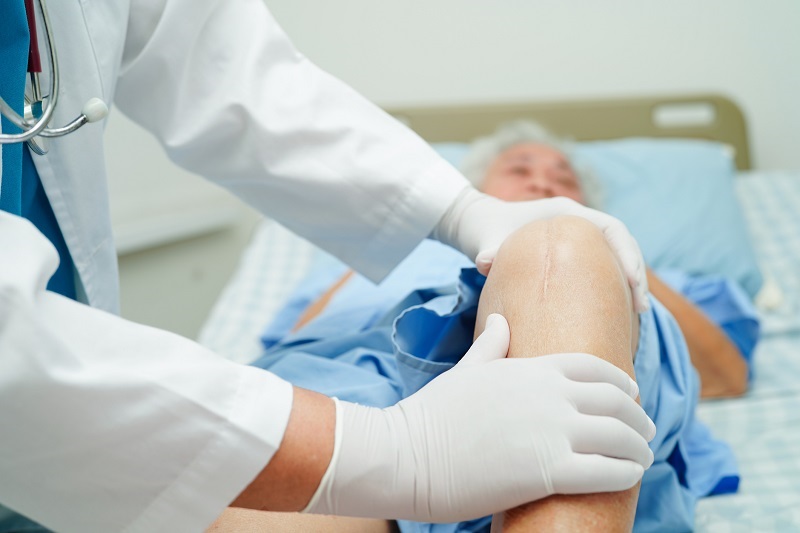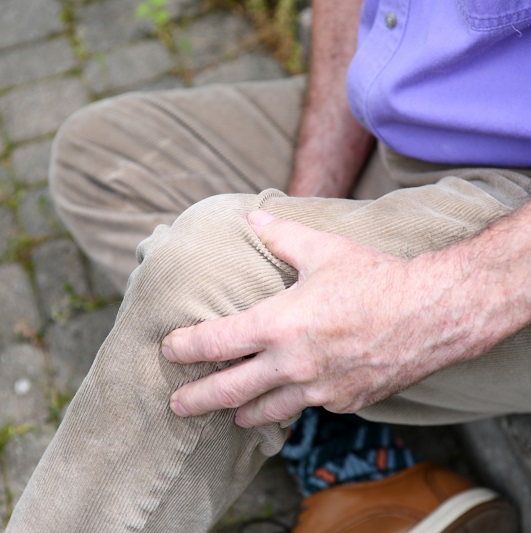Knee Replacement Healing Time: What to Expect After Surgery

February 16, 2024
For many people, a knee replacement can mark the end of years of pain and limited mobility. But it’s important first to give yourself time to heal.
“Most people will recover in approximately three months, but for some, it could take a full year,” says Stephen Rossman, D.O., FAAOS, FAOAO, an orthopedic surgeon at Hackensack University Medical Center. “So it’s important to listen to your body, plan ahead and proceed at a recovery pace that is best for you.”
It’s also helpful to set yourself up for success:
- Make sure your house is easy to move around in. Clean up any clutter on the floor and clear pathways.
- See if friends and family are willing to help in the first few days after surgery, which will relieve some of your stress.
- Stay active. This will make the recovery process easier.
Immediately After Surgery
Immediately after surgery, you will be taken to a recovery area:
- The length of your hospital stay will depend on factors including age, type of surgery and mobility. Some people go home the next day, while others need to stay for several days.
- Your doctor will help manage pain through a combination of methods, including pain medication.
- Shortly after the procedure, you may be asked to stand and take a few steps. Most people can walk the same day.
1–3 Weeks Post-surgery
In the first few weeks after surgery, you will experience the following:
- Need to use assistive devices. You will need to use a walker and then graduate to a cane.
- Need to manage pain. You’ll likely experience pain in the initial first weeks. Your doctor may prescribe medications to mitigate all pathways of pain. At the end of three weeks, your need for pain management should greatly decrease or cease.
- Begin physical therapy. You may receive in-home physical therapy for the first week or two. Then, you’ll likely begin outpatient physical therapy two or three times a week at week 3.
- Possibly return to work. Your ability to return to work will greatly depend on the job. If you have a sedentary job, you may be able to slowly begin to return to work within this timeframe.
4–6 Weeks Post-surgery
In this phase, you will start to see progress. You may notice:
- You rely less on supportive devices.
- Your mobility will have noticeably increased.
- Your pain will be significantly reduced.
6+ Weeks Post-surgery
“Hopefully, at six weeks, the patient is hitting their stride, has returned to their typical everyday life, and the replacement is starting to feel like a normal knee,” says Dr. Rossman.
For continued recovery success:
- Keep putting the work in at physical therapy for three months, or as your doctor recommends.
- Work to maintain a healthy weight and manage comorbidities, such as diabetes, by eating well, moving often and eliminating bad habits such as smoking.
Next Steps & Resources:
- Meet our source: Stephen Rossman, D.O., FAAOS, FAOAO
- To make an appointment with an orthopedic surgeon near you, call 800-822-8905 or visit our website.
- Learn more about orthopedic care at Hackensack Meridian Health
The material provided through HealthU is intended to be used as general information only and should not replace the advice of your physician. Always consult your physician for individual care.







